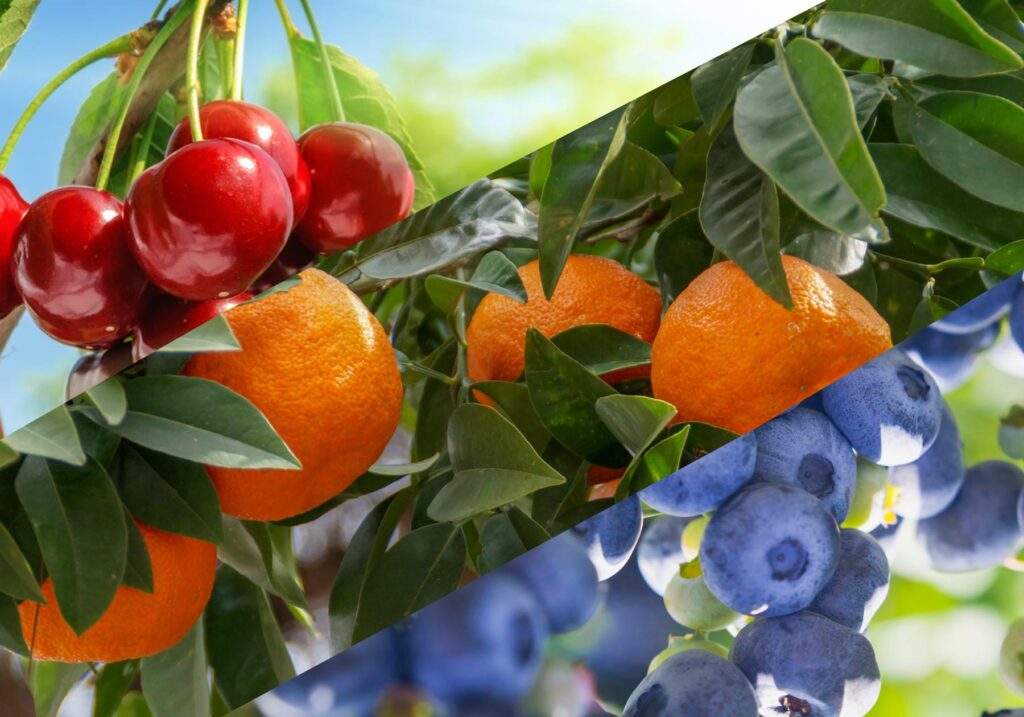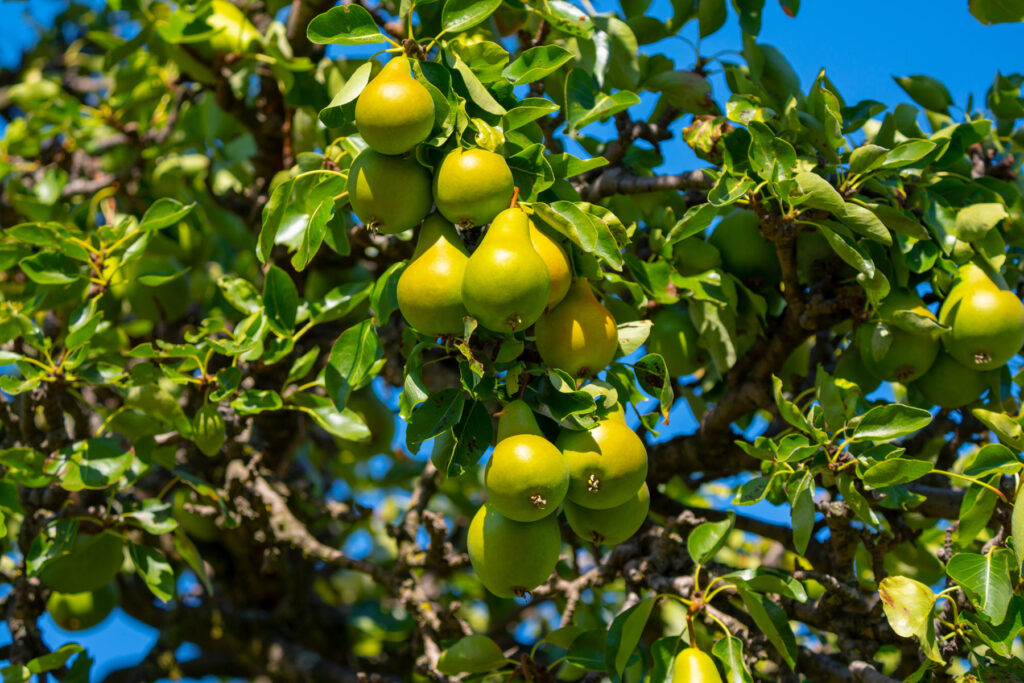Pear Protection Starts with Cuticle Care
Sunburn is the result of light energy overwhelming a plant’s ability to absorb and use sunlight for photosynthesis. Developing a program that includes a product to protect and strengthen the fruit and leaf cuticle helps pear growers maximize marketable yields each growing season.
Parka is a plant health solution proven to reduce sunburn in pears by up to 18% over traditional kaolin clay coatings. Its three modes of action help increase the plant’s overall antioxidant capacity to use excess sunlight for photosynthesis and prevent photo-oxidation that causes sunburn. Parka also helps seal microfractures that can lead to russeting.
Why use Parka on Pears?
- Reduces sunburn damage and russeting.
- Increases fruit quality and yield.
- Increases plant tolerance to environmental extremes.
- Easily tank mixed with foliar nutrients and pesticides.
- Leaves no visible residue.
- Exempt from maximum residue levels.
- Zero preharvest and zero worker reentry intervals.
Download Resources
How to Use Parka in a Program
Apply Parka at fruit set. Reapply every 21 days.
Want More Information on Parka?
Send us a message. Be sure to ask your retailer about how to include it in your crop protection program.
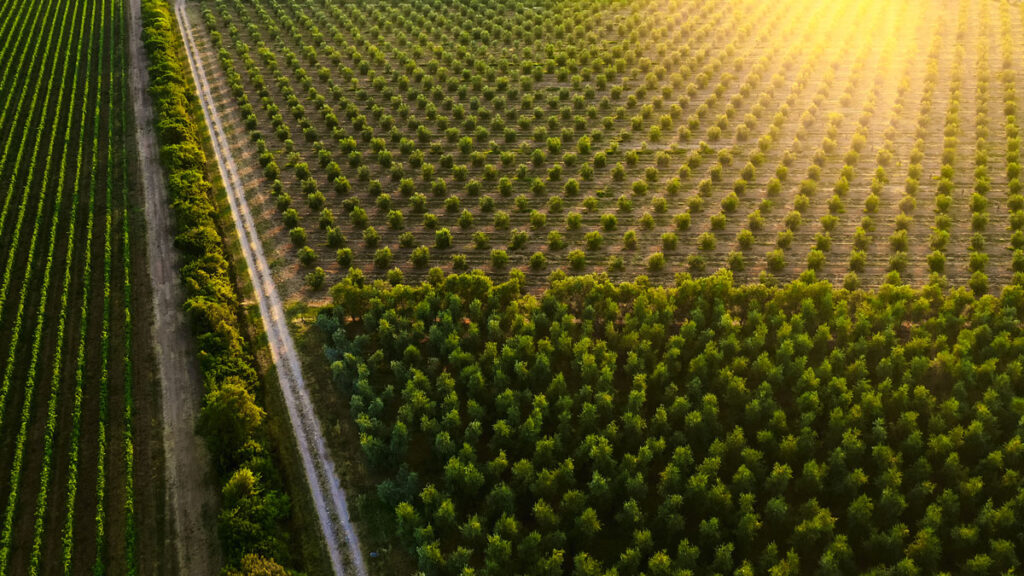
FAQs
Although there is limited information regarding the exact temperature and solar radiation thresholds that cause sunburn damage on pears, it is widely known that in fruit, too much light energy can overwhelm the light absorption capacity of the chlorophyll-containing tissue by exceeding its photosynthetic ability. Heat exacerbates the problem, and in some cases is the sole cause of it.
Russeting is a physiologic response of the fruit to water loss that occurs through microfractures that form on the surface of the fruit during development. During early fruit development stages, the increase in fruit volume subjects the skin and cuticular layer to high strains and stresses that exceed their extensibility, resulting in microfractures. To protect itself, the fruit develops a waterproof secondary layer, called the periderm, just beneath these microfractures. Subsequently, the ruptured cuticle and epidermis dries and sheds, leaving this new secondary surface visible, which is known as ‘russet’. Extended periods of surface wetness or high humidity can exacerbate the problem, reducing the fruit’s market value.
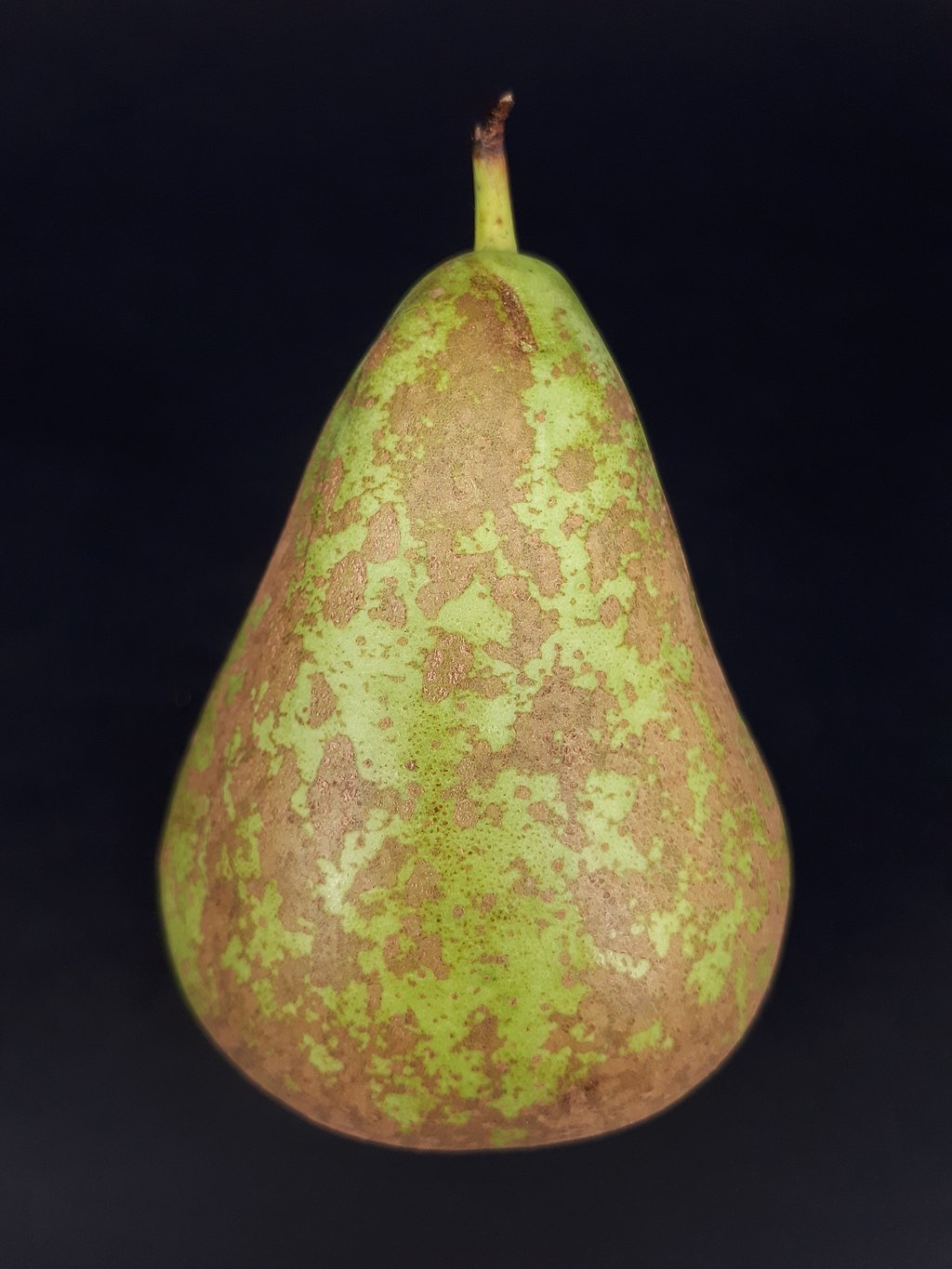
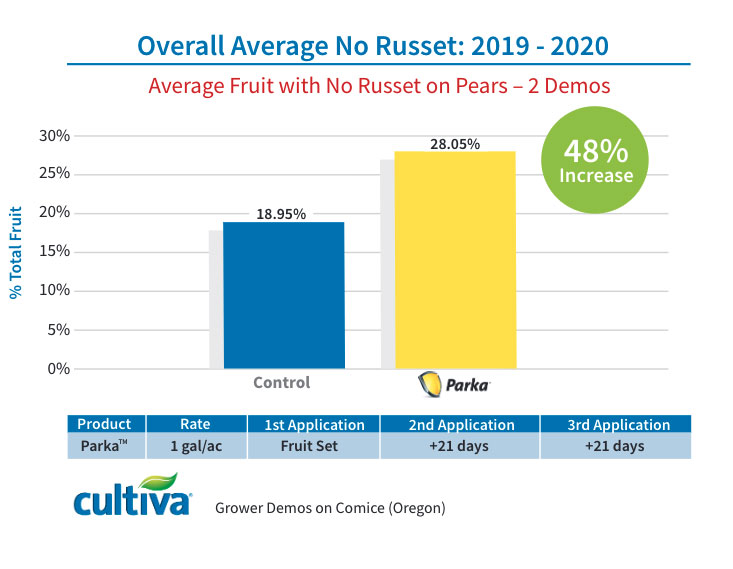
In the photosynthetically active tissue, the chlorophyll present in the PSII complex (1st step in photosynthesis) captures the energy from the sun, which is used to excite an electron that comes from the splitting of a water molecule. This excited electron is received by molecule called pheophytin and is used during the remaining photosynthetic process. Both chlorophyll and pheophytin are necessary tools plant cells need to deal with energy from the sun. Parka-treated trees are shown to contain higher concentrations of both components in leaves and fruits, which means that the cells have a better capability to use the excess light energy for photosynthesis instead of allowing it to cause photo-oxidative damage.
For russeting prevention, early season applications of Parka can seal the microfractures that occur as a result of rapid fruit expansion while also providing water repellency from the surface of the fruit due to the hydrophobic nature of the formulation.
Of course, if a product works well, growers will like it. Parka has excellent efficacy for sunburn and russeting protection in pears and increases the yield of high-quality fruit. It is grower-friendly in other significant ways as well, particularly its flexibility in tank mixing. Parka can be tank mixed with a wide variety of other foliar inputs, including both fertilizers and pesticides. This saves the fuel and labor costs of making an additional pass in the field. Harvest crews like Parka, because it does not have the white residue that can be an irritant during picking.


